
A 24-year-old woman is facing 3 counts of reckless homicide and one misdemeanor count of disregarding a stop sign and causing injury after the pickup truck she was driving struck and killed three siblings who were crossing the road to get to their school bus in rural Rochester, Indiana. Six-year-old twin brothers Xzavier Ingle and Mason Ingle, and their 9-year-old sister, Alivia Stahl, died at the scene Tuesday morning. The children’s classmate and neighbor, 11-year-old Maverik Lowe, was also hit. He was airlifted to the hospital and remains hospitalized in critical condition. The children were crossing State Route 25 to get to their school bus when they were hit at about 7:15 a.m. in front of the Meiser mobile home park where they lived.
The Tippecanoe Valley School Corp. bus had stopped on the two lane road, lowered its stop-arm and had the emergency lighting activated just before the northbound Toyota Tacoma pickup truck slammed into the children as they crossed the southbound lane. Alyssa L. Shepherd, of Rochester, was arrested at her workplace, was charged and released on a $15,000 bond. Shepard told an Indiana State Police detective that she saw flashing emergency lights on the rural highway but didn’t realize it was a school bus picking up the children until it was too late. By the time she realized a bus was stopped, the children were already in front of her vehicle. Their father rushed out of their home and identified them after police arrived to investigate, officials said. State Police Detective Michelle Jumper testified at a probable cause hearing into charges against Alyssa Shepherd, the bus driver told investigators he saw the oncoming truck’s headlights. The bus driver stated that because the truck was far back and had plenty of time to slow, the driver waved to the children, telling them to cross. The bus driver honked the horn when it was clear the truck wasn’t stopping. Jumper testified that Shepherd told her she typically did not drive on the route where the crash occurred and that she had three children in the back seat of her truck when she allegedly struck and killed the three siblings.
A witness driving behind Shepherd said she and Shepherd were traveling 45 mph. The witness said the truck’s headlights illuminated the children as they were crossing the road and she said she started to freak out as she realized ‘I’m slowing down, but that truck in front of me is not slowing.” Shepherd remained at the scene after the crash, cooperating with investigators. She was given a blood test as is standard in all fatal crashes, but police said they do not think alcohol or drugs were a factor. Shepard who works as children’s director at Faith Outreach, a Foursquare Gospel Church in Rochester then went to work to pray.
Parents who live in the mobile home park had previously asked the Tippecanoe Valley School Corporation to change the bus route so the children didn’t have to cross State Route 25 to catch the bus. Parents complained that it was dangerous for children to cross a highway where vehicles routinely travel at 50 to 60 mph. Elgin Ingle, the uncle of the children who died said “There’s plenty of room for the school bus to pull into the mobile home park and pick up these kids. This school has been warned that this is an issue. My brother is torn apart, he didn’t lose one kid, he lost all his kids,” Ingle said. “How do you tell your little brother it’ll get better? You can’t. My brother, the most loving man in the world and the best father I’ve ever known, now is a father to no one.” Blaine Conley, superintendent of the Tippecanoe Valley School Corporation, released a statement that stating that the bus stop will be relocated from State Road 25 into the mobile home park where the children lived.
Read more
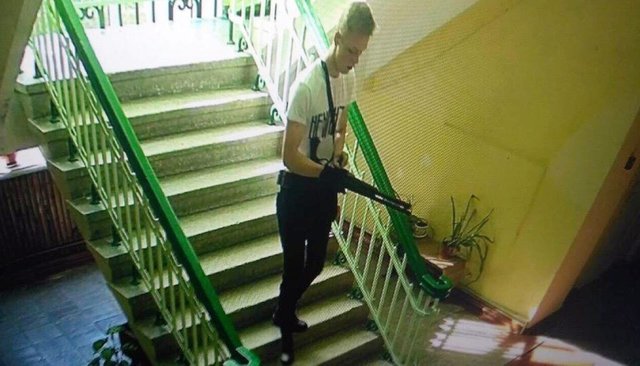
Russian officials say the gunmen who killed 21 people and wounded 53 more before killing himself at a vocational school in Crimea was an 18 year old student of the school. The shooter, identified as Vladislav Roslyakov, described as a shy loner, also set off an explosive device. He committed suicide in the library after the assault at Kerch Polytechnic College. Officials are still investigating a motive in the attack which is the deadliest instance of school violence in the region since the 2004 Beslan terror attack, which killed 333 people, most of them children.
At first, officials reported a gas explosion at the school but later said an explosive device had ripped through the cafeteria during lunchtime in a suspected terrorist attack. Eventually, the attack was classified as a mass murder attack at the school carried out by one person. The Investigative Committee said the homemade explosive device rigged with shrapnel went off in the school lunchroom and a second explosive device was later found and destroyed.
Guns are tightly restricted in Russia. Civilians can own only hunting rifles and smooth-bore shotguns and must undergo significant background checks. Local officials said Roslyakov had only recently received a permit to own a shotgun which he bought on September 8th. Officials say Roslyakov bought 150 rounds of ammunition at a gun shop on October 13. Just four days later on October 17th, he entered the school grounds at about 11:46 a.m. and began his attack. Several witnesses described the gunman walking up and down the halls at Kerch Polytechnic College and firing randomly at classmates and teachers. He also fired at computer monitors, locked doors and fire extinguishers. A survivor of the attack said the shooting lasted about 15 minutes.
Security footage at the school shows Roslyakov enter the technical college carrying a sports bag and bypassing security. He then entered the school’s lunchroom with a rucksack and leaving without it. The footage captures him going up to the school’s first floor empty-handed just before a fire ball and a massive explosion blows out windows and doors on the ground floor. Roslyakov is then shown walking towards a female teacher in a corridor and gunning her down, before shooting an approaching student. A security camera image carried by Russian media showed Roslyakov, calmly walking down the stairs of the school with the shotgun in his gloved hand while wearing a T-shirt emblazoned with the word “Hate.”
A video taken by an unknown survivor of the attack shows a terrified group of students and staff running through a hallway as gunshots and screaming can be heard nearby. The group talk in whispers as they search for safety, not knowing where the gunmen is. The video shows them briefly in a classroom and then another hallway. They approach a stairwell and see a body on the stairs below before turning back down the hall and down another stairwell. Terrified, they cautiously look down the stairs before making a run through a doorway and to an outside exit.
If you’re thinking some details in this story sound very familiar you are correct. His outfit resembled that of Eric Harris, one of the perpetrators of the 1999 Columbine High School massacre. The Columbine attackers also tried but ultimately failed to detonate an explosive device in the cafeteria. Similar to Columbine, Roslyakov also retreated to the school library to commit suicide after the attack. A friend of the shooter said he had an interest in the Columbine school shooting in the US. Also leading to speculation that the massacre was a copycat crime is the fact that some Russian news outlets have reported that Roslyakov belonged to a fan club on social media for the columbine shooters. Russian news outlets have dubbed the shooting the “Russian Columbine,” because of the similarities.
Read more

Thousands of Central American undocumented migrants are heading toward the United States as they flee rampant violence and economic deprivation. The caravan of about 4,000 Honduran migrants has reportedly grown to around 7,000 as their journey continues toward the U.S. border. The US President has threatened to cut foreign aid to Central American countries, nullify the U.S.-Mexico-Canada trade deal if Mexico doesn’t stop the migrants, and even deploy troops to “close” the border.
The Mexican government had ordered the migrants to submit to processing by the immigration authorities at a legal border crossing but many said they feared being deported and the group kept moving north. The Mexican authorities warned as the migrants approached that only travelers with valid documents and visas, or with claims for asylum or other forms of protection, would be allowed into Mexico. They threatened deportation for those who tried to enter illegally and said they would process the migrants one by one.
Mexican officials said they received more than 1,000 asylum requests from caravan members at the border. Some migrants were taken to a local fairground that had been converted into a temporary government shelter. Many others remained on a bridge spanning the Suchiate River, waiting to be processed by Mexican officials. The vast majority of the caravan’s members have refused to apply for refuge in Mexico, worried that the process could lead to their detention or deportation.
Mexican officials have said migrants seeking asylum are under no legal obligation to apply in Mexico. Under a proposed bilateral agreement, United States border officials would be able to legally turn back asylum seekers who first pass through Mexico, forcing them to seek protection south of the border. Mexican officials encouraged the migrants to apply for asylum but made little effort to halt the massive group that stretched along this city’s main highway for more than a half-mile. Federal police officers were present on the road, monitoring the procession, and a police helicopter circled overhead, but the authorities allowed the procession to carry on unimpeded.
The caravan is part of a tradition of mass migrations, often organized by advocacy groups, meant to provide safety in numbers to migrants, who face many threats to their safety along the perilous migrant trail. These caravans usually number in the hundreds, passing through unnoticed, but the current caravan, which continues to grow, is by far the largest on record.
Many of the migrants have previously lived in the United States, for years or even decades, before being deported. Many say they joined the caravan to reunite with their children, or to resume old jobs and seem undeterred by the American authorities who had apprehended them and promised to keep them out. Some say they returned to their home countries voluntarily when their visas expired but have longed for a better life. Some members of the caravan plan to apply for political asylum, citing the threats they’ve received from gangs in Honduras or, in Nicaragua, the government’s assaults on the political opposition.
Read more

The Dallas Mavericks and the basketball team’s owner Mark Cuban were sanctioned by the NBA after an independent investigation substantiated a number of allegations against men within the organization. The findings include improper conduct in the workplace and domestic violence. Mark Cuban publicly apologized and said he will pay $10 million to women’s organizations as part of an agreement with the NBA. Cuban agreed to the $10 million payment as well as staffing and leadership changes.
The sanction came after a months-long investigation into accusations against several employees, including the former team president and chief executive, Terdema Ussery. The investigation arose from an article in Sports Illustrated in February that exposed a workplace filled with problems for female employees. The article said Ussery had engaged in “various acts of inappropriate conduct toward women,” and that Earl Sneed, a former writer for the team’s official website, had faced numerous allegations of domestic violence.
Although Cuban did not face accusations of misconduct, the employees who were mistreated suggested the harassment had gone on for years and that he must have known about it and had done little to prevent it. The investigation included information gathered from more than 200 interviews with current and former Mavericks employees. Ussery was found to have engaged in improper workplace conduct toward 15 female employees, including touching them and making inappropriate comments. Sneed had committed two acts of domestic violence, including one against a co-worker. Cuban was made aware of the episode but did not fire him. Ussery had already resigned from the team in 2015 to take a position with Under Amour. Shortly after the Sports Illustrated article, Sneed announced he would be leaving the team and then deleted his Twitter account.
The investigation also found that Chris Hyde, a longtime senior account executive, had made inappropriate comments toward women, viewed pornography on his workplace computer and made unsolicited sexual advances toward co-workers. Even after Cuban warned Hyde about looking at pornography at the office, Hyde’s inappropriate behavior continued for years.
In a statement, the league announced that the money from Cuban would be donated to a variety of organizations chosen by an advisory council of Mavericks executives, including Cuban, as well as several N.B.A. officials. The inquiry, conducted by independent investigators overseen by the league, also recommended that the Mavericks hire more women, including in leadership positions, and create a formal process for employees to report misconduct. The N.B.A. ordered the Mavericks to file quarterly reports on its progress in those areas, and to begin workplace training for all staff members, including Cuban, 60, who acquired a majority stake of the Mavericks in 2000.
“The findings of the independent investigation are disturbing and heartbreaking,” Commissioner Adam Silver said in a statement, “and no employee in the N.B.A., or any workplace for that matter, should be subject to the type of working environment described in the report.”
Let us know what you think of this story in the comments!
Read more
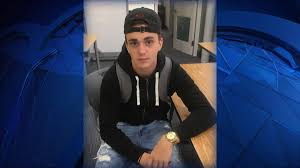
Enfield, CT Police have made a second arrest in connection with the death of 16-year-old Justin Brady, who was fatally stabbed during a fight with another teen outside an Enfield home late Sunday evening. Police have charged 20-year-old Michael Joseph Cerrato, who lives at the home where Brady was killed, with hindering prosecution in connection with the murder. On September 11th, an 18-year-old Hartford teen identified as Shyheim “Trey” Adams was charged with manslaughter in the first degree and is being held on $1 million bail. The most profound question is why no one called 911 sooner.
Shortly after midnight on September 10th, Enfield Police responded to calls of several teens standing around someone laying on the ground. In one call, a neighbor tells the dispatcher that some of the teens kept going in and out of the house next door. Officers found Brady bleeding from multiple stab wounds, clinging to life in a front yard near 15 Hoover Lane. Brady, who was a junior at Enfield High School, where he played football and basketball, was rushed to the hospital where he was later pronounced dead.
Michael Cerrato’s father, the Enfield Assistant Town Attorney, Mark Cerrato, who lives at 15 Hoover Lane where the killing took place, was placed on indefinite paid leave pending the investigation. Mark Cerrato told police he went to bed around 11pm just after telling his son, his son’s girlfriend and a friend he knows as “Trey” to keep the noise down as they were playing video games. In his first interview, Cerrato told police he was awakened shortly after by a knock at the door and a “tall kid was at the door holding 2 phones in his hand saying that his friend needed a doctor and asked Mark if he could bring him.” Cerrato told police he tried to use one of the phones but couldn’t dial because it was locked. In his second interview he told police that he was awakened when he heard the garage door open and saw his son taking his Toyota Rav4. Police searched the home and removed blood stained clothing found in the basement and a knife that was hidden under a mattress in a bedroom.
Police said Brady and Adams had been arguing on social media throughout the day and eventually met outside the Hoover Lane residence to fight. In initial interviews, Michael Cerrato claimed he didn’t see anything and left the house around 11pm. He later admitted that Trey and Brady had been arguing over the phone and thru Snapchat. Trey left the room to take a call and returned saying Brady was on his way over to fight. Cerrato stated that he didn’t believe Trey because he lies a lot and that Justin Brady had previously called him out on it. Cerrato said Brady arrived 15 minutes later and they went outside. Brady and Trey were in the street yelling at each other when Brady hit Trey in the chest. They were wrestling and ended up on the ground. Cerrato says that he heard Brady yell “he’s cutting me” and witnessed his friend stabbing Brady fast from about 10 feet away. Trey took a step back and Justin looked down and was covered in blood, yelling to call 911. Trey ran inside the house and Cerrato followed and saw him washing his hands. Cerrato, who never called 911, says the knife came from inside his home but he did not know Trey had it until the stabbing occurred. Cerrato and his girlfriend left in his father’s SUV and dropped Trey off in Hartford.
Another witness says that after the fight he went into the house through the garage and witnessed Trey and Mike in a room, Trey was changing his pants and Mike kept saying “we gotta get out of here”. The witness went back outside to check on Justin and that Tre, Mike and his girlfriend came out saying to get Justin out of there. After they left the witness started banging on the front door of the home for help after he saw Mike’s father close the garage door. He says Mike’s father came to the door and when he asked for help, Cerrato’s father told him “I don’t know what to tell you.” He says Cerrato’s father started to call 911 but stopped halfway thru. Thirty minutes had elapsed between the time the trio left the scene and officers arrived and found Brady.
Share your thoughts in the comments below!
Read more

In Cincinnati, a gunman opened fire at a downtown bank, killing three people and injuring two others before he was shot and killed by police. Cincinnati Police Chief Eliot Isaac said the gunman, who they believe acted alone, fired more than a dozen shots from a legally purchased 9-millimeter semiautomatic pistol. Authorities have identified the gunman as Omar Perez, though a motive for the shooting is still under investigation. The gun used in the shooting was recovered at the scene along with multiple magazines and around 200 rounds of ammunition.
Police say Perez, 29, of Northbend, Ohio, has no known connection to the bank and it is unclear how he got to Fountain Square but that he entered multiple businesses before going to the bank. He opened fire in the building’s loading dock before continuing into the lobby area and firing more shots. Officers responded to a 911 call around 9:10 a.m. local time about an “active shooter” at the bank. Multiple officers then “engaged” the suspect, who was fatally shot multiple times.
Five people were shot, some multiple times, including three who died from their injuries. One person died at the scene and two victims died at the hospital. Those killed in the shooting were a grandfather, a father and a son. Richard Newcomer, 64, a father of 3 and grandfather of 8, who was supervising a construction project on the building’s third floor was shot as he entered the building. Luis Calderón, 48, a father to a 13 year old and 16 year old, was also killed as he arrived to work. He had moved to Cincinnati last year to work for the bank and provide a better life for his children. The third victim was identified as Prudhvi Raj Kandepi, 25, a programmer and consultant for Fifth Third who was described by family as someone who would give everything he could to friends and family.
Police have released security footage of the gunman “firing shots at anyone he sees” while inside the lobby of the building. The security footage shows Omar Enrique Santa Perez walking in the lobby with his gun held up and carrying a briefcase containing hundreds of rounds of ammunition over his shoulder. A security officer was seen helping people get to a safe location as the gunman was randomly firing shots at anyone he sees. Perez then turns toward the windows and fires shots at approaching officers. The body camera footage shows officers approaching the gunman and shooting through the glass of the lobby. The officers on the scene engaged the shooter within three and a half minutes of the first 911 call and fired 11 shots, taking out the gunman. Police later found that Perez’s gun had jammed during the four-minute rampage.
Cincinnati Mayor John Cranley praised the officers for ending the shooting quickly. “You could see in the video … the guy is shooting at the cops, you can see them not being afraid and engaging and ending it.” “If he had gotten on the elevator, gone up to a floor, if he had been there earlier or a little bit longer, many more people would have been killed.”
Fifth Third Bank is headquartered in Cincinnati but has locations across 10 states. The company released a statement via Twitter. “Earlier today, an active shooter entered our headquarters building in downtown Cincinnati. The situation is contained and the shooter is no longer a threat. Our thoughts and prayers are with everyone caught up in this terrible event. We continue to work with law enforcement as we ensure the safety of our employees and customers. We are grateful for the support and concerns from our neighbors throughout Cincinnati and the country.”
Read more
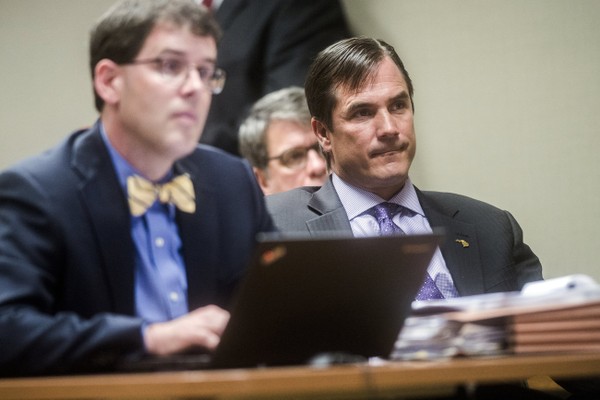
Michigan’s state health director Nick Lyons is facing trial for involuntary manslaughter over the deaths of two men amid an outbreak of Legionnaires’ disease in Flint after the city switched its water supply to the Flint River in an attempt to save money. The Flint region’s 2014-2015 Legionnaires’ disease outbreak that killed 12 people and sickened another 79 people. Michigan has admitted 12 people died in the outbreak, but a recent report by PBS “Frontline” has found the death toll from the water crisis in Flint may be higher than Michigan officials have acknowledged.
Judge David Goggins issued a ruling sending Nick Lyon’s criminal case to a full trial, meaning the judge believes there is enough valid evidence for a jury to consider. The ruling came at the end of a 10-month preliminary hearing that started in September and wrapped up in early July after more than 25 days of testimony. Lyons is the highest-ranking state official to face charges so far over Flint’s water-poisoning crisis. He’s also being charged with willful neglect of duty and misconduct in office for the deaths of John Snyder and Robert Skidmore. The involuntary manslaughter charge is a felony punishable by up to 15 years in prison. Lyon’s felony misconduct in office charge is for allegedly obstructing academic researchers from studying the outbreak, which carries a sentence of up to five years in prison.
Both men allegedly died from Legionnaires’ disease caused by Flint switching its drinking water source to the Flint River in 2014. They did not ensure that the water was properly treated to prevent corrosion in old plumbing. This caused lead and other metals to leach into the water, exposing residents and risking permanent neurological damage to local children. The improper water treatment also interfered with disinfectants and caused the release of iron and other bacterial nutrients into the water, which can spur the spread and growth of Legionella bacteria. When those germs are aerosolized and inhaled from sources such as hot showers, humidifiers, and water coolers, they can cause a deadly form of pneumonia called Legionnaire’s disease.
Flint experienced a surge in Legionnaire’s disease after the water switch, with cases totaling around 100 and leading to at least 12 deaths, including Skidmore and Snyder’s. Researchers with the Centers for Disease Control and Prevention genetically linked the bacteria infecting patients to those found in the city’s water. Prosecutors argued Lyon, the Michigan Department of Health and Human Services director, waited too long to alert the public to an outbreak of Legionnaires’ disease in Flint during the water crisis. He allegedly knew about the outbreak in early 2015 but waited nearly a full year before alerting the public. Both men were said to be healthy and active prior to their hospitalizations. Lyon’s defense attorneys argued he was not negligent in the men’s deaths and that prosecuting a public official who did his best amid a wide-ranging crisis would have a chilling effect on other public employees doing their duties. They pointed out Skidmore and Snyder “would have received the same medical treatment” even if Lyon had made an announcement sooner.
In a statement issued after the ruling, Governor Rick Snyder praised Lyon’s work during the Flint water crisis and said Lyon would remain on the job as Michigan Department of Health and Human Services director during the trial. An additional 14 current or former state and local officials have been criminally charged in connection with the water issues.
State officials now say that the city’s water meets federal standards for lead and other contaminants but the water can still pick up toxic ingredients from contaminated pipes. For now, residents need to continue drinking bottled or filtered water until the city’s plumbing is replaced, which the city is working to do by 2020.
Read more
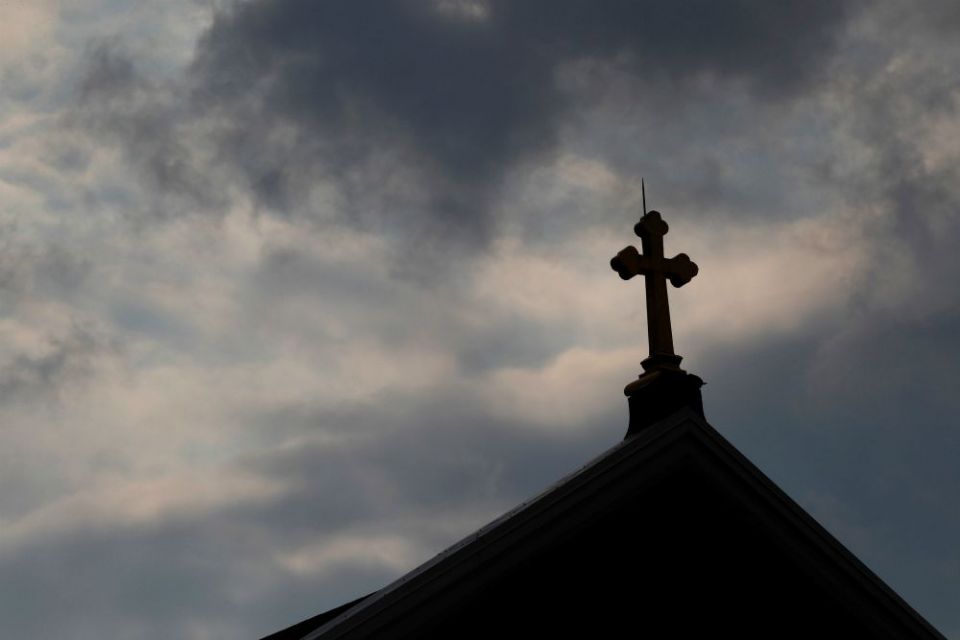
A Pennsylvania a grand jury report revealed how more than 300 Catholic priests sexually abused over 1,000 children and possibly thousands more over seven decades and that the church leadership covered up the abuse. The report chronicles how the church used an array of tactics to conceal the abuse, including lying to the community about why a priest was removed from the parish, transferring pedophile priests rather than firing them, and locking abuse complaints away in a “secret archive.”
The report also details how priests raped young girls and boys, including one priest who raped a young girl in the hospital after she had her tonsils out. Another priest impregnated a young girl and then arranged for her to have an abortion. One priest who had been repeatedly accused of child abuse asked for—and received—a letter of recommendation to work at Disneyland.
Attorney General Josh Shapiro said “Today, the most comprehensive report on child sexual abuse within the church ever produced in our country was released,” Attorney General Josh Shapiro said. “Pennsylvanians can finally learn the extent of sexual abuse in these dioceses. For the first time, we can all begin to understand the systematic cover up by church leaders that followed. The abuse scarred every diocese. The cover up was sophisticated. The church protected the institution at all costs.” “The term ‘secret archives’ is not my term. It is how the church officials themselves refer to the troves of documents sitting in filing cabinets, just feet from the bishops’ desks. In each diocese, the bishops had the key to the secret archives, which contained both allegations and admissions of the abuse and the cover-up.”
The 884-page document, two years in the making, exposed the predators and the efforts of their bishops to protect them. Several clergy abuse victims who had testified before the grand jury attended Shapiro’s news conference and at least one of them could be seen breaking down in tears.
In a statement issued Thursday—two days after the grand jury delivered its report—Vatican spokesperson Greg Burke described the abuses as criminal and morally reprehensible. “There are two words that can express the feelings faced with these horrible crimes: shame and sorrow. The Holy See treats very seriously the work of the grand jury and the report it has produced. The Holy See condemns unequivocally the sexual abuse of minors. The abuses described in the report are criminal and morally reprehensible. The acts were betrayals of trust that robbed survivors of their dignity and, in many cases, also their faith. The church must learn hard lessons from the past, and there should be accountability for both abusers and those who permitted abuse to occur.”
The Vatican told victims Pope Francis “is on their side” and promised action to “root out this tragic horror.” The statement came just months after the pope said he mishandled a Vatican investigation into widespread sexual abuses by clergy in Chile, and less than two months after a Vatican court sentenced the church’s former ambassador to Washington, D.C., to five years in prison on a child pornography charge.
Read more

Federal Judge Dolly Gee has ordered the transfer of all children out of the Shiloh Residential Treatment Center in Manvel, Texas, due to allegations of widespread abuse in the immigrant detention center. Judge Gee condemned the detention center for injecting children with psychotropic drugs without their parents’ consent, imprisoning some children in overly restrictive confinement and prohibiting the children from making private phone calls. She also explicitly ordered that the detention center must obtain permission from a legal guardian before giving any psychotropic drugs to detained children.
A pending class-action lawsuit alleges immigrant children housed at the Shiloh Treatment Center were held down and forcibly injected with drugs, rendering them unable to walk, afraid of people and wanting to sleep constantly. Court documents allege troubling practices in which children claim they were tackled and injected and forced to take pills identified as vitamins that made them dizzy and drowsy.
U.S. District Judge Dolly Gee found conditions at the nonprofit Shiloh Treatment Center, in violation of a 1997 settlement, called Flores vs. Reno, requiring immigration officials to place detained minors “in the least restrictive setting appropriate to (each Class Member’s) age and special needs.” Gee ordered that all children involved in the suit be removed from the Shiloh facility “unless a licensed psychologist or psychiatrist” determines that a particular child “poses a risk of harm to self or others.” She also ordered the government to seek consent before giving psychotropic drugs to any detained migrant child. Without consent, the facility may administer such a drug only in an emergency or under a court order, she said.
The Shiloh Residential Treatment Center in Manvel, Texas, was founded in 1995 by Clay Dean Hill. In 2013, the resettlement agency began funding the shelter, sending it more than $26 million in grants over five years to house migrant children. The company that operates the facility south of Houston has a history of problems, including deaths of children in its custody and allegations children were systematically drugged with psychotropic medications. The children were allegedly drugged with pills and injections at the residential treatment center.
The center, a mobile home complex-turned-child care center, is licensed to serve kids ages 3 to 17, is run by the Office of Refugee Resettlement and the office is part of the U.S. Department of Health and Human Services. The center has been cited eight times for by Texas inspectors in the last three years. Some of the infractions include overdue background check renewals for staff, children being able to get into medication and go to the restroom with it, and children who were inadequately supervised due to staff members being distracted on their cellphones.
Children have continued to be placed there despite the center being plagued with serious accusations for years. In 2001, Stephanie Duffield, 16, died after being restrained by staff. Following her death, Shiloh was found to be “in compliance” with state requirements, according to the refugee resettlement office. Children have died at two other programs affiliated with Clay Hill, Behavior Training Research Inc. and the now-closed Daystar Residential Inc. Between 1993 and 2010, three children died after being restrained at those facilities. In 2002, Latasha Bush, 15, died from asphyxia. Eight years later, Michael Keith Owens, 16, died after being restrained inside a closet. Both deaths were ruled homicides. In most cases, the children were hogtied. Beyond these deaths, there were reports of sexual abuse and staff making developmentally disabled girls fight for snacks.
Read more
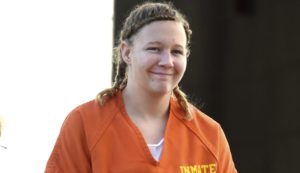
Accused NSA whistleblower Reality Winner has pled guilty to retaining and transmitting a document to a news organization after reaching a deal with the U.S. government to serve a 5-year prison sentence. Winner had faced up to 10 years in prison on charges she violated the Espionage Act by leaking a top-secret document to The Intercept about Russian interference in the 2016 election. She’s been imprisoned for the last year at the Lincoln County Jail in Georgia.
Winner, a former Air Force linguist, was arrested last June and accused of sharing a classified report about Russian interference in the 2016 election with the news media. Ms. Winner, who was honorably discharged from the Air Force in 2016, was working as a contractor for the National Security Agency when she obtained a copy of a report that described hacks by a Russian intelligence service against local election officials and a company that sold software related to voter registration.
The Intercept, an online news outlet that a prosecutor said Ms. Winner admired, published a copy of the top secret report shortly before Ms. Winner’s arrest was made public. The report described two cyberattacks by Russia’s military intelligence unit, the G.R.U. — one in August against a company that sells voter-registration-related software and another, a few days before the election, against 122 local election officials.
An F.B.I. affidavit made public after her arrest last year said there was a visible crease mark on the file, a scan of which The Intercept had provided to the government while trying to authenticate it. That prompted investigators to surmise it was a printout. Audit trails showed six people had printed copies, but only one — Ms. Winner — had used a work computer to send emails to The Intercept.
A search warrant application said she had found the report by plugging keywords into the N.S.A.’s system that fell outside her normal work duties. Computer security experts noted that the printer appeared to leave barely visible microdots on the printout identifying the serial number of the printer and the date and time of the printing: 6:20 a.m. on May 9, 2017.
The Justice Department prosecuted Ms. Winner under the Espionage Act, a World War I-era law that criminalizes the unauthorized disclosure of national-security secrets that could be used to harm the United States or aid a foreign adversary. Her decision to plead guilty to one felony count allows the government to avoid a complex trial that had been scheduled for October.
Winner is the second person known to have reached a plea agreement in a leak prosecution case under the current administration. Former F.B.I. agent, Terry J. Albury, pled guilty in April, but prosecutors in that case have hinted that they will ask that he serve 46 to 57 months in prison. The Justice Department has recently filed charges in at least two other leak-related cases. James Wolfe, a former Senate Intelligence Committee staff member, was arrested and charged with lying to the F.B.I. about his contacts with reporters, including a Times reporter with whom he had a personal relationship and whose phone records the department secretly seized, during a leak investigation. In another case, Joshua A. Schulte, a former C.I.A. software engineer, was charged with violating the Espionage Act and other laws based on accusations that he sent a stolen archive of documents and electronic tools related to the agency’s hacking operations to WikiLeaks, which called them the Vault 7 leak.
Read more












